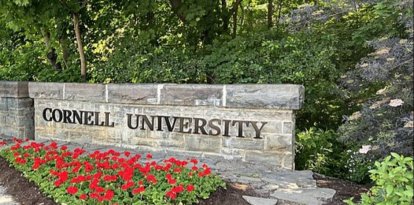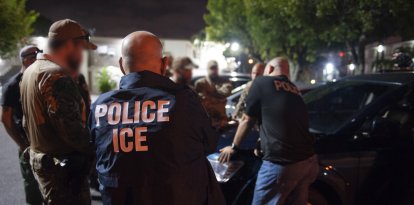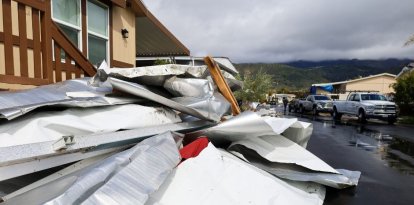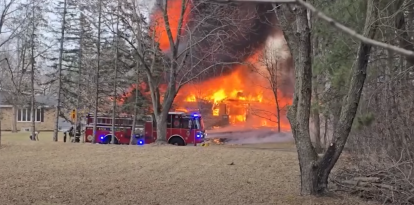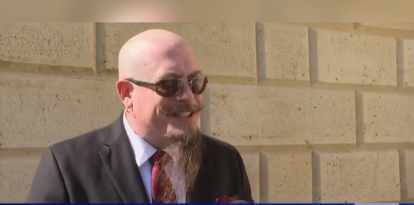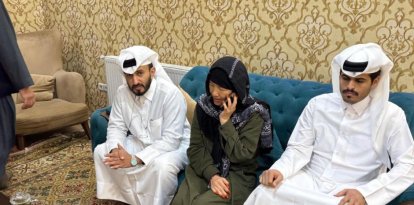“We Don’t Want to Kill Ukrainians”
Shortly after midnight on Tuesday, October 18th, Voz Media witnessed another large group of migrants crossing illegally into the Yuma, Arizona sector.
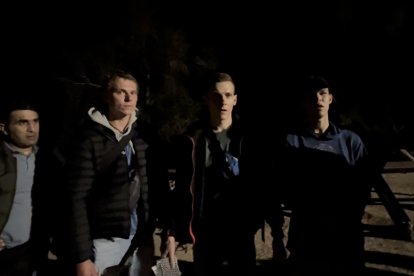
Russian migrants apprehended in Yuma, Arizona / Sheena Rodriguez.
More than 2 million Customs and Border Protection (CBP) apprehensions have occurred in the 2022 fiscal year alone at the Southwestern U.S. Border.
Shortly after midnight on Tuesday, October 18th, Voz Media witnessed another large group of migrants crossing illegally into the Yuma, Arizona sector. Men and women, some with young children, lined up far beyond the CBP canopy utilized for processing, past the end of the border wall, and into the darkness alongside the Cocopah Tribe reservation property line.
Interviewed migrants reported traveling from their native countries of Nepal, Russia, Uzbekistan, Ecuador, Peru, Colombia, Venezuela, India, Georgia, Dominican Republic, Cuba, and Tajikistan. An estimated 500-600 illegal aliens arrived in just under four hours in a singular spot.
Voz Media spoke with one group of four men, who together illegally crossed into Arizona. Three of the men were reportedly from Russia and one from Tajikistan. “We have no choice; if we stay, we must go fight in Ukraine,” one man stated in broken English. The Russian national noted that he flew from Moscow to Venezuela, flying again through Panama to Mexico and eventually walking across the U.S. southern border. The men stated that the trip cost them approximately $10,000 per person and lasted about five days. The single adult men expressed their hope to be granted political asylum due to the conflict between Russia and Ukraine. “We don’t want to kill Ukrainians,” stated the asylum seeker as the line slowly moved forward.
More individuals continued to emerge from behind the wall and filed into the line. Amongst the newly arrived group were three adults: one couple, and an uncle with a metal leg and crutches. The adult family was the first in the group which claimed to migrate from Venezuela, stating that the trip took approximately one month.
Although the Venezuelan nationals stated they averted the Darién Gap, the uncle and young woman described the dangers they still encountered. One example the three provided occurred while traveling through Panama. The trio described a horrific experience that took place while being forced to stay in a warehouse used as a stopping point by traffickers and ran by what they described as “mafiosos.” According to the Venezuelan’s, the members of the “mafiosos” attempted to rob a family with a young son. The group estimated the boy was between 4-6 years old. When the boy’s father attempted to resist, the men pulled the young boy aside, shot him in the head, killing him instantly as his family helplessly watched. The men then declared to the remaining migrants that this killing should serve as a warning to anyone else who considered defying or resisting.
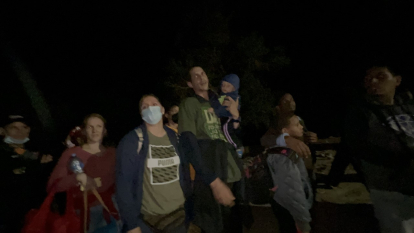
Cubans Night 2 Yuma
In April, the Department of Homeland Security Secretary Alejandro Mayorkas visited Central America to coordinate what the agency portrayed as a safer migration route around the deadly Darién Gap, signing a Bilateral Arrangement on Migration and Protection. Ultimately, as noted by the interviews with illegal aliens who stated they traveled around the Gap, possibly as part of the international arrangements, the dangers are still rampant. However, the trip was made notably faster by the bus routes set to avoid the jungle. In a recent article, Todd Bensman, Senior National Security Fellow with Center for Immigration Studies, described the strategy as a “superhighway” incentivizing more mass illegal migration by making simulated claims of safety.
The trio stated that they are seeking asylum from political persecution at the hands of President Maduro, who the group described as a communist dictator. When asked, the women stated that they heard about the order by the U.S. Department of Homeland Security after arriving in Mexico, but was too late for them to turn back as they were out of money and had sold all of their belongings. “Yes, we heard about Venezuelans being sent back, but we cannot understand why,” said the woman. When asked why the group decided to come to the U.S. now, the uncle stated that it is no secret that the U.S. border is open and migrants from all over the world are being accepted, confusing the group even further as to why Venezuelans are singled out.
Further down the line of those waiting to be processed, we spoke to a couple from Cuba. While holding their 8-month-old son, the couple explained how they were granted access to leave Cuba by obtaining a travel visa. The couple stated the journey was difficult and dangerous. For example, while in Mexico, the family woke up to a violent group of men, blazing guns in their hotel room, demanding money. Simultaneously, other surrounding illegal migrants also echoed personal testimonies like the Cuban family’s violent experiences in Mexico including at the hands of corrupt federales.
When asked if the group from Cuba understood that the method used to cross into the U.S. was illegal, the group quickly stated “yes,” but claim that they were instructed when, where and how to cross.
Each individual interviewed over a three-day period at the Yuma Sector resoundingly stated they would not have taken the journey if they knew the perils they would face along the way.
RECOMMENDATION

